|
Setting Regulations
The Secretary of the Interior, under the authorization of the
Migratory Bird Treaty Act, is authorized to determine when hunting of migratory
game birds can take place in the United States and to adopt regulations for this
purpose. This responsibility has been delegated to the U.S. Fish and Wildlife
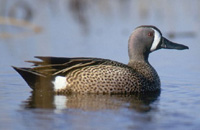 Service. The Pacific Flyway Council cooperates with the Service to develop
regulations for migratory game birds in the United States west of the
Continental Divide. Both organizations consider the welfare of migratory game
bird populations first, and then public demands for recreation and subsistence
harvest, and other uses. The flyway councils have no direct role in setting
migratory bird hunting regulations in Canada or Mexico.
Service. The Pacific Flyway Council cooperates with the Service to develop
regulations for migratory game birds in the United States west of the
Continental Divide. Both organizations consider the welfare of migratory game
bird populations first, and then public demands for recreation and subsistence
harvest, and other uses. The flyway councils have no direct role in setting
migratory bird hunting regulations in Canada or Mexico.
The annual process for setting hunting regulations in the United States
begins in October and ends in September. The process involves several steps:
- Service and state biologists gather, analyze, and interpret
survey data and disseminate the information through a series of
published status reports and presentations to flyway councils
and committees.
- The Pacific Flyway Study Committee reviews the reports and proposes
appropriate hunting seasons and bag limits to the council.
- The Pacific Flyway Council considers the proposals and submits
its recommendations to the Service.
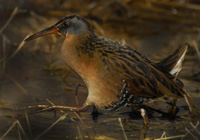
- The Service develops migratory bird hunting regulations by
establishing the frameworks, or outside limits, for season lengths,
season dates, bag limits, and areas for migratory game bird hunting.
Final approval is the responsibility of the Secretary of the
Interior.
- The state wildlife agencies, through their appointed commissions and
boards, set state waterfowl and other migratory game bird hunting
regulations (season dates, bag limits, etc.) within the frameworks
established by the Service. States may be more conservative in their
selections than the federal frameworks but never more liberal.
Annual Regulation Cycle
The U.S. Fish and Wildlife Service sets migratory bird
hunting regulations by establishing the frameworks, or outside limits, for
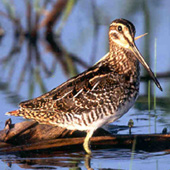 season lengths, bag limits, and areas for migratory bird hunting. The states
subsequently select hunting seasons within these frameworks. Frameworks and
season selections are developed annually for each species considering factors
such as population size and trend, geographical distribution, annual breeding
effort, the condition of breeding and wintering habitat, number of hunters,
and the anticipated harvest.
season lengths, bag limits, and areas for migratory bird hunting. The states
subsequently select hunting seasons within these frameworks. Frameworks and
season selections are developed annually for each species considering factors
such as population size and trend, geographical distribution, annual breeding
effort, the condition of breeding and wintering habitat, number of hunters,
and the anticipated harvest.
The biological cycle of migratory birds controls the timing of
data-gathering activities and thus the date on which population survey
results are available for examination. The Study Committee and Council
usually consider migratory bird hunting regulations at their fall meetings
just after biological data become available for many waterfowl species in
about late August.
The Migratory Bird Treaty Act
The Migratory Bird Treaty Act of 1918 implemented
the 1916 convention (treaty) between the United States and Great Britain
(for Canada) for the protection of birds migrating between the U.S. and
Canada. Relative to hunting regulations, the provisions of the Treaty
established:
- A definition of migratory birds, including game and nongame
species.
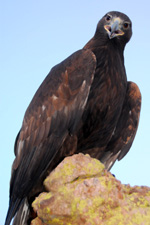
- A closed hunting season each year between March 10 and September 1,
with certain limited exceptions for subsistence purposes.
- Hunting seasons no longer than 3.5 months (107 days) for any
species and region.
- Prohibition of hunting migratory birds except as permitted by
regulations adopted by the U.S. Department of the Interior (U.S.
Fish and Wildlife Service).
Similar conventions between the United States and Mexico (1936; amended
1997), Japan (1972) and Russia (1976) further expanded the scope of
international protection of migratory birds. Amendments to the treaties
with Canada and Mexico were ratified in 1997 to provide for regulated
subsistence hunting of migratory birds in Alaska and Canada.
What are Migratory Game Birds?
The migratory bird conventions (treaties) between
the United States and several foreign nations for the protection and
conservation of these species define migratory game birds as those species
belonging to the following families:
- Anatidae (ducks, geese, swans)
- Rallidae (rails, gallinules, coots)
- Gruidae (cranes)
- Scolopacidae (snipe)
- Columbidae (pigeons, doves)
- Corvidae (crows)
Three families listed as game birds have not been open to sport hunting
since endorsement of the Migratory Bird Treaty Act.
- Charadriidae (plovers, lapwings)
- Haematopodidae (oystercatchers)
- Recurvirostridae (avocets, stilts)
Adaptive Harvest Management
The annual process of setting duck-hunting
regulations in the United States is based on
Adaptive Harvest Management: a system of resource monitoring, data
analyses, and rule making. In 1995, the Service adopted the concept of
adaptive resource management for regulating duck harvests in the United
States.
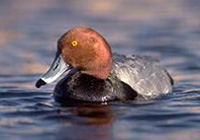 The adaptive approach explicitly recognizes that the consequences
of hunting regulations cannot be predicted with certainty, and provides
a framework for making objective decisions in recognition of that
uncertainty. Inherent in the adaptive approach is an awareness that
management performance can be maximized only if regulatory effects can
be predicted reliably. Thus, adaptive management relies on a cycle of
monitoring, assessment, and decision making to clarify the relationships
among hunting regulations, harvests, and waterfowl abundance.
The adaptive approach explicitly recognizes that the consequences
of hunting regulations cannot be predicted with certainty, and provides
a framework for making objective decisions in recognition of that
uncertainty. Inherent in the adaptive approach is an awareness that
management performance can be maximized only if regulatory effects can
be predicted reliably. Thus, adaptive management relies on a cycle of
monitoring, assessment, and decision making to clarify the relationships
among hunting regulations, harvests, and waterfowl abundance.
The Formal Process for Change
Member states have a formal process for proposing
federal framework changes through the flyway system:
- States proposing changes in regulatory frameworks must provide
verbal or written notification of their intentions at the Pacific
Flyway Study Committee's non regulatory meeting (typically in
March). States
must submit the proposed changes and biological justification in
writing to the Study Committee at least 30 days before its
regulatory
meeting (typically September).
- The recommendation goes to the appropriate subcommittee for
consideration. The subcommittee makes a recommendation to the Study
Committee, which then votes to either approve or reject the
proposal.
- All approved proposals go to the Pacific Flyway Council for
consideration. The council votes on the proposals and forwards its
recommendations to the Service for consideration.
- The Service Migratory Bird Regulations Committee (referred to
as the SRC) considers flyway council recommendations at its
October meeting where migratory bird hunting regulations for the
subsequent fall and winter are developed.
Federal Register
Federal rulemaking documents (proposed, supplemental, and
final) for migratory game bird hunting in the U.S. are published in the
Federal Register.
The annual regulation cycle includes the following publications and approximate
target month.
- Proposed rulemaking for migratory game bird hunting regulations—August
- Proposed season frameworks for migratory game bird hunting—December
- Final frameworks for migratory game bird hunting—February
- Seasons and bag and possession limits for certain migratory
game birds—June
Public Input
Publics wishing to provide input on proposed migratory
bird management actions and regulations are encouraged to contact their state
agency representatives. Publics may also provide comment by attending the
Pacific Flyway Council meetings in March or September or by submitting written
comments to the Council chairperson. The rulemaking processes of individual
state and federal governments all have a public comment period. The federal
rulemaking process and opportunity for public input is described in the
Federal
Register.
Photo credit: blue-winged teal, photographer unknown; Virginia rail, G.
Andrejko; Common snipe, J. Bartholmai; golden eagle, G. Andrejko; redhead,
photographer unknown; western Canada goose, T. Sanders.
|



